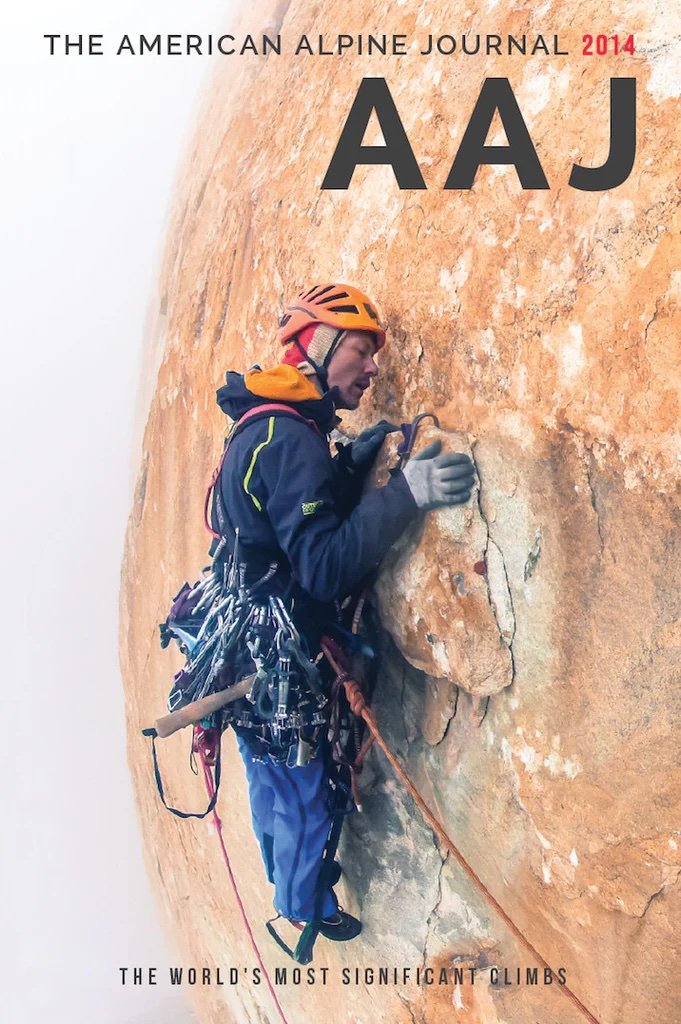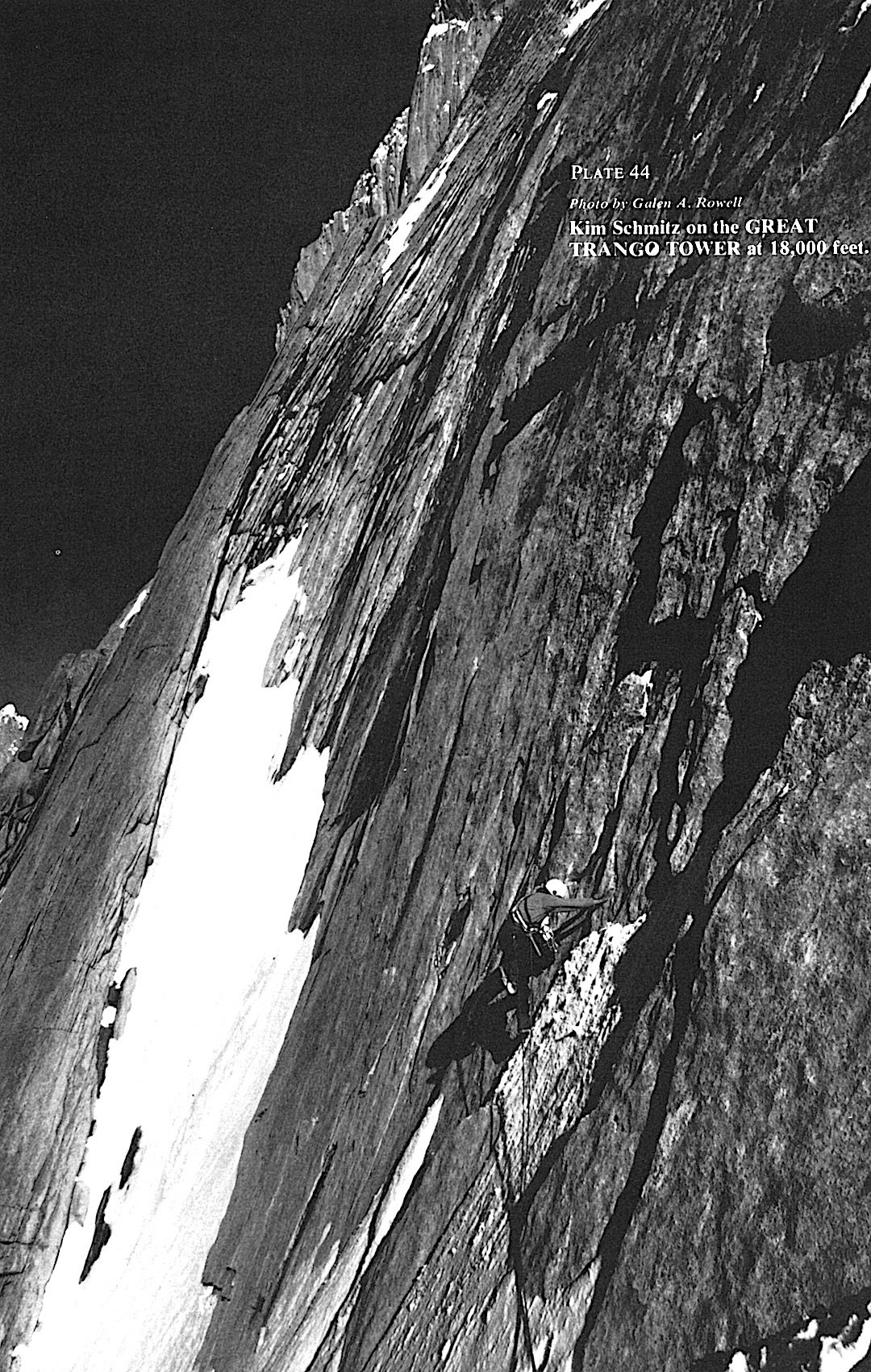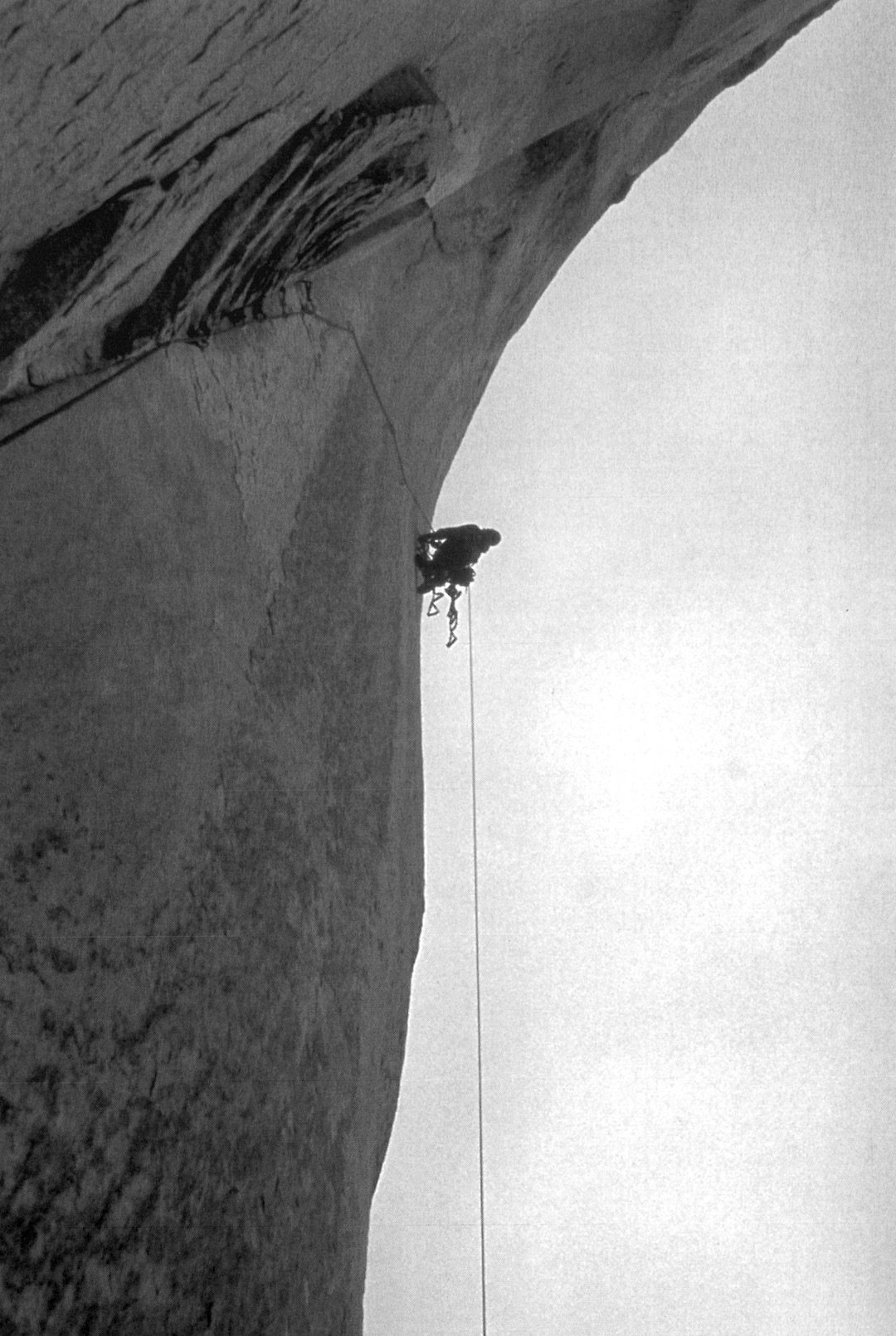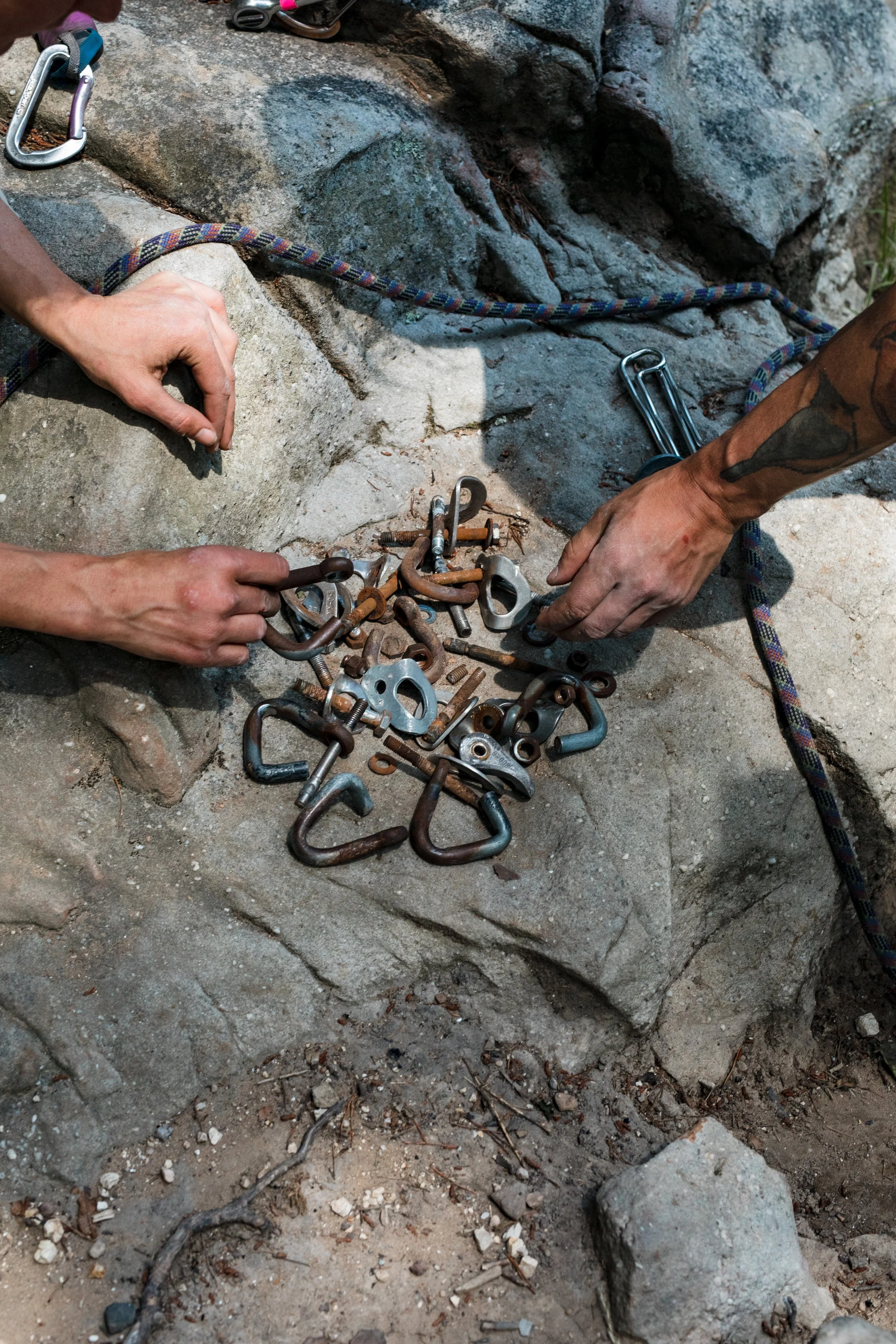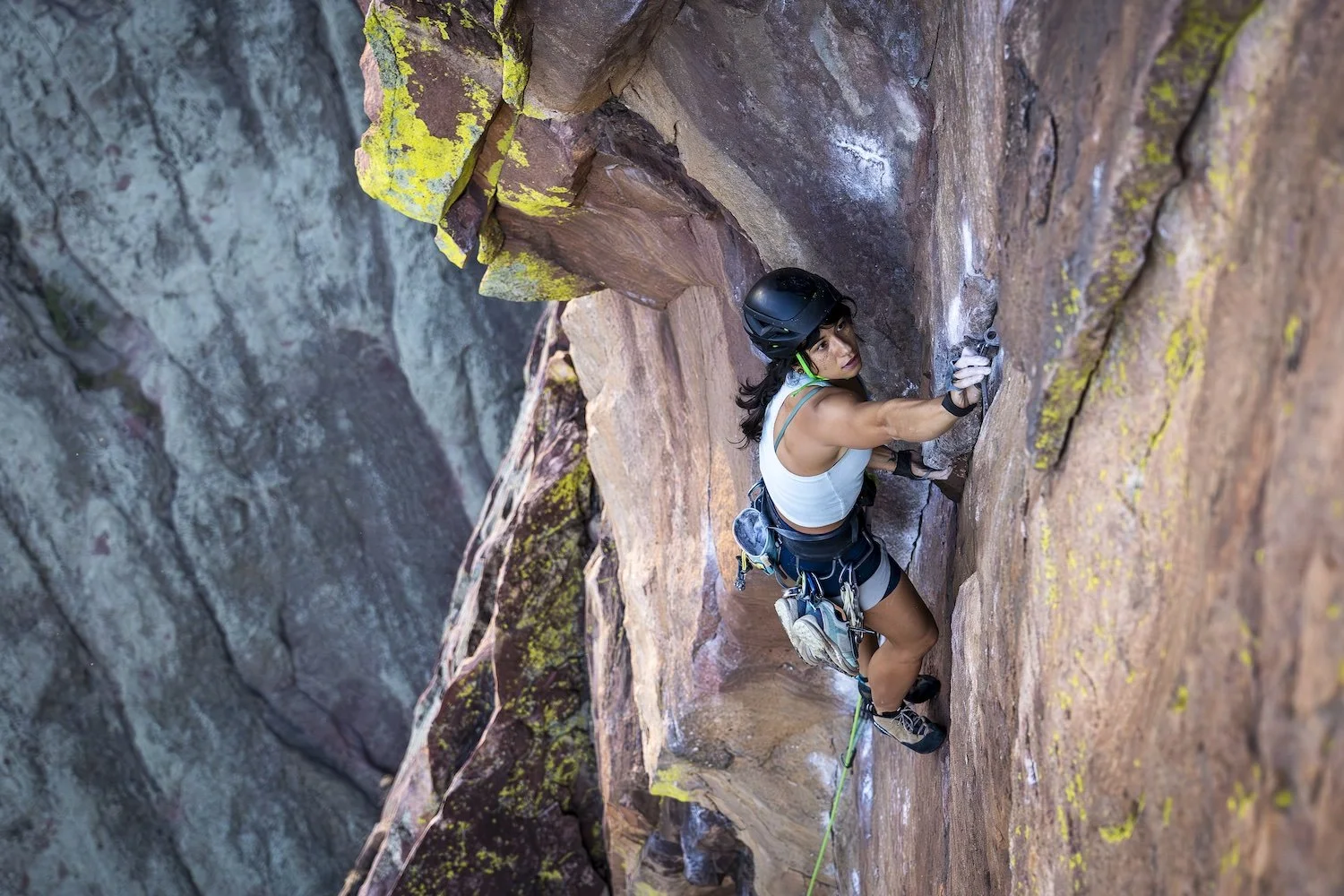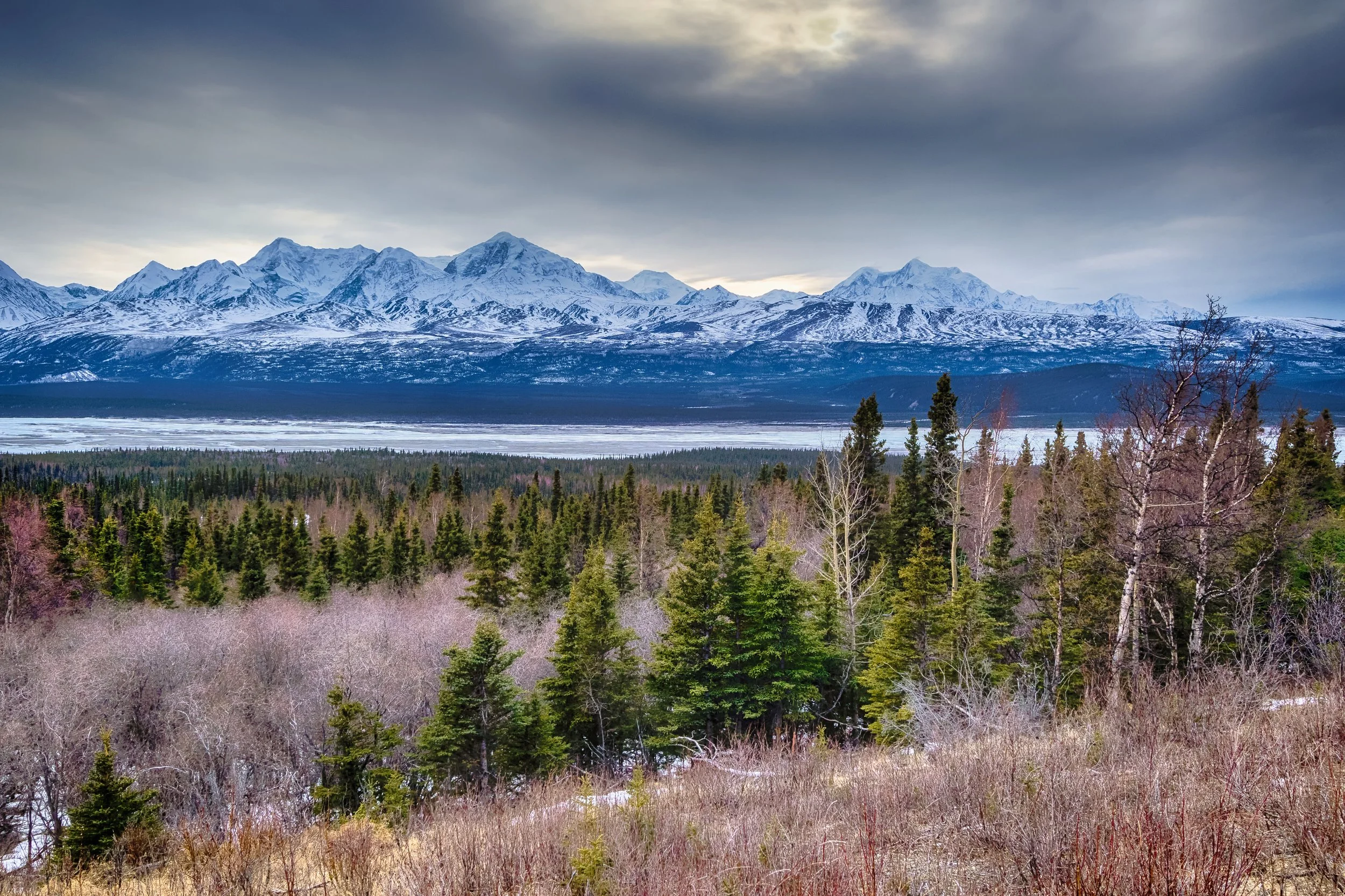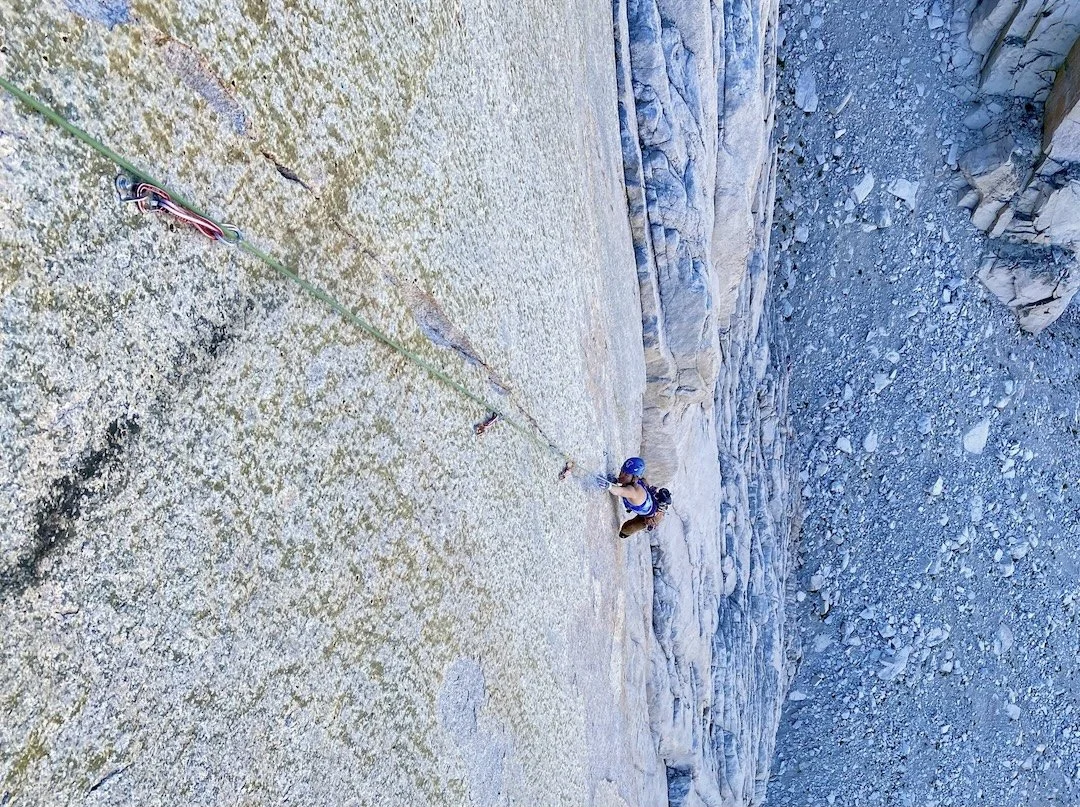By: Sierra McGivney
A wonderful panorama looking southeast over Great Trango Tower from the summit of Trango II. (A) K7 (6,934m). (B) Yermanendu Kangri (7,163m). (C) Masherbrum (7,821m). (D) Mandu East (7,127m). (E) Mandu West (7,081m). (F) Urdukas (6,320m). (G) Seemingly unnamed. (H) Liligo Glacier. (I) Great Trango northeast (6,231m). (J) Great Trango Main (6,286m). (K) Great Trango southwest (ca 6,250m). (1) Great Trango normal route. (2) Top section of Krasnoyarsk Route. The lower left foreground is the summit of Trango Tower. PC: Jakob Schweighofer
"The impressive rock spires of Great Trango Tower and Trango (a.k.a. Nameless) Tower create one of the wonders of the Earth, capturing the imagination of everyone who travels on the Baltoro Glacier. Great Trango resembles a giant castle flanked by steep walls. On top of nearly a mile of sheer rock, four magnificent summit turrets comprise the East, West, Main (middle), and South summits," writes John Middendorf.
Great Trango Tower is located in the Baltoro Glacier region of the Karakoram Range of Pakistan. The Karakoram is located mostly in northern Pakistan but also reaches into Tajikistan, China, Afghanistan, and India, creating a diverse ecosystem. Cutting-edge alpinists travel to the area to test their skills by climbing new routes on some of the biggest walls in the world. Great Trango Tower, which sits at 6,286 meters, offers challenging granite face-climbing and unforgettable rock features. The climbing history of the mountain runs deep, so we have compiled a list of must-read ascents on Great Trango Tower from the AAJ.
Don't worry! We haven't forgotten Trango Tower (AKA Nameless Tower), the other famous monolith in the Trango Towers group. Our next dive into the AAJ archives will focus on the legendary ascents on Nameless Tower, so be on the lookout. Until then, dive into these epic stories from Great Trango Tower.
1. The First Ascent of Great Trango Tower
Great Trango Tower. Climb Year: 1977. Publication Year: 1978. Author: Dennis Hennek.
Kim Schmitz on perfect granite at 18,000 feet on the Great Trango Tower. Photo by Galen A. Rowell.
This list wouldn't be complete without the first ascent of Great Trango Tower. After rerouted and canceled flights, Galen Rowell, John Roskelley, Kim Schmitz, Dennis Hennek, and Dr. Lou Buscaglia began their trek through the Shigar Valley up the Braldu River Valley, where they met up with the final member of their team, Dr. Jim Morrissey. Once they established basecamp on Trango Glacier, a four-day storm settled over them, causing debris to fall on their proposed climb.
Telephoto view of Gasherbrum IV and Hidden Peak over Baltoro Glacier from the summit of Great Trango Tower. Photo by Galen A. Rowell.
"The scene greeting us at the base of the gully brought us back to reality and the seriousness of the next 3,500 feet."
On the first day of climbing, Hennek, Rowell, Schmitz, and Roskelley witnessed an avalanche filling the gully they had just ascended, where they believed Buscaglia and Morrissey to be. But "luck stayed with us"— the two had scrambled to the side of the gully to check out a waterfall, the avalanche narrowly missing them. This was only the first day, and it wouldn't be the only hurdle in their journey. Yet the rewards were great. "The afternoon was warm and clear, with an unobstructed, unforgettable view in all directions. We all agreed that there could be no better view of the Baltoro Karakoram." Read about the first ascent while looking at black and white photos from their expedition here.

2. Suffer Well: Thirst and Hunger On The Azeem Ridge
Great Trango, Pakistan. Publication Year: 2005. Author: Kelly Cordes.
The cover of AAJ 2005: Josh Wharton traversing (5.10+ A1) into the headwall on day 3, about 1,500m up the Azeem Ridge, Great Trango, Pakistan. Photo by Kelly Cordes.
This article stands out in the AAJ archives because of what a saga this ascent turned out to be. Josh Wharton and Kelly Cordes climbed Great Trango’s southwest ridge, which they called the Azeem Ridge (7,400' vertical, 5.11R/X A2 M6), in what they deemed "delusional optimism," "disaster style," and "safety fifth!" climbing. Cordes and Wharton climbed 54 pitches, facing many challenges. On the second pitch, one side of their jury-rigged double-gear slings came undone, causing about a quarter of their cams to fall. Then, halfway up the wall, the two ran out of fuel, leaving them with only one option, sucking on snow in place of drinking water. Cordes wrote: "When we reached the bivouac where our last fuel sputtered out, we never spoke of retreat." On the fourth morning, Wharton's headlamp slingshotted out of his hands and was lost to the tower. Soon after, Cordes’ belay device suffered the same fate. At this point, their only option was up and over. Continue reading about how Cordes and Wharton kept heading up, even against all odds.
3. Climbers vs. Technology
Great Trango Tower's Northwest Face. Publication Year: 2000. Author: Jared Ogden.
Alex Lowe and Mark Synnott with computers at Camp I. Photo by Jared Ogden.
This article was written at the turn of the century when technology and climbing began to clash. Jared Ogden, Mark Synnott, and Alex Lowe faced moral dilemmas about filming and hosting a live internet site during the expedition for their sponsor, Quokka Sports Inc. Quokka.com was one of the only virtual adventure sports websites near the dawn of the internet, until they went bankrupt in the spring of 2001. Ogden, Synnott, and Lowe brought "all assortments of cyberspace technology," including computers and video cameras, and fixed more than 3,000 feet of rope. Foreshadowing today's day and age of viral climbing videos on TikTok and Instagram, this article launched a discussion of technology and its place in climbing. But once on the wall, the team's technology worries disappeared, and they became engrossed in the ethereal alpine world of the Karakoram.
Alex Lowe Cleaning Pitch 30. Photo by Jared Ogden.
The team faced challenges with group dynamics, fever, and "storm-ridden suffer-fests." Through hard-earned adventure, the team produced Parallel Worlds (VII 5.11 A4, 6,000'). "Our…route combined all the elements of rock climbing: a long free climb up a 3,400-foot slab to a vertical and overhanging headwall that stretches over 2,000 feet, finishing on a knife-edge ridge for 1,000 feet to the West Summit," wrote Ogden. Read about this harrowing adventure and Ogden's tribute to Alex Lowe, who died in an avalanche just a few months after this climb.
Want to read more discourse about technology and its place in the mountains? Read Steve House's hot take on "business climbing" and media regarding the ascent of Parallel Worlds here.
4. The Russian Way
Author: Yuri Koshelenko, Russia. Publication Year: 2000.
Parallel worlds: the American (left) and Russian teams hard at work on the headwall pitches on Great Trango's northwest face. Photo by Yuri Koshelenko.
While Jared Ogden, Mark Synnott, and Alex Lowe were putting up Parallel Worlds, Yuri Koshelenko, Alexander Odintsov, Ivan Samoilenko, and Igor Potankina climbed a line to the right of them—parallel up the Northwest Face of Great Trango Tower. The two groups worked hard next to each other for a time, developing genuine mutual assistance, "I was unexpectedly seized by the warm hospitality of the American team. I took huge gulps of piping hot tea from Alex's cup while thinking about the condition of the wet rock," writes Koshelenko. On July 24, after ascending shared fixed ropes, the two groups split apart, and so began the Russian team's arduous journey up dangerous 5.10 to 5.11 free climbing and difficult A3 and A4 sections. Two days later, while climbing a roof, Odintsov ripped off a huge block, tumbling down the face, caught by a well-placed cam but suffering hip and shoulder injuries. Odintsov's fall was just the beginning of their intense battle up the wall. The group faced unstable weather, including snowstorms, multiple uncomfortably close lightning strikes, a dropped haul bag, and dwindling food supplies. Read the epic tale of the ascent of The Russian Way (VII 5.11 A4, 2675m), written beautifully by Yuri Koshelenko, here.
"The mountains always accept the tribute, though sometimes the price may seem excessive. But humanity cannot exist without extremes—such is the law of evolution."
5. Epic Attempts on the Trango Towers
Great Trango Tower and Trango Nameless Tower, Attempts. Publication Year: 2001. Author: Timmy O'Neill
Funded by the American Alpine Club's Lyman Spitzer Climbing Grant, now the Cutting Edge Grant, this trip report chronicles two attempts of the southwest ridge of Great Trango, now the Azeem Ridge, by Timmy O'Neill and Miles Smart. O'Neill and Smart spent almost 50 days on the Trango Glacier waiting out bad weather. During one of their three brief weather windows, they attempted the southwest ridge of Great Trango, an effort "ended with a forced bivy at 18,000" after climbing for 12 hours through 4,000 feet of 4th class to 5.10. They tried again to no avail, despite climbing to within 300 meters of the summit, and moved on to a potential ascent of Eternal Flame on Nameless Tower. Their first attempt on Eternal Flame, "a one-day, single-push climb," ended with a difficult decision to descend six pitches from the summit. Three days later, they "blasted" from the col, ready to summit Eternal Flame. After eight hours of climbing, "the hand of Allah came to catch me and then subsequently thwack me into the wall," writes O'Neill. O'Neill had fallen 100 feet after he short-fixed his rope. Read about the epic attempts on the Trango Towers here.
6. Triumph and Tragedy on Great Trango Tower
The Norwegian Buttress, 1984.
In 1984, a Norwegian team of four, Hans Christian Doseth, Finn Daehli, Stein P. Aasheim, and Dag Kolsrud, attempted the first ascent of the East Face of Great Trango. Due to a lack of food and slow progress up the wall, the team decided to split. Aasheim and Kolsrud rappelled off safely, reaching the Dunge Glacier, while Daehli and Doseth continued on. From the ground, Aasheim and Kolsrud watched via telephoto lenses as their friends reached the summit. Tragically, Daehli and Doseth fell to their deaths during the descent. Their bodies were later spotted at the foot of the climb, but soon after, an avalanche buried them. Their magnificent line was named the Norwegian Buttress. "The triumph had turned into a total tragedy." Read more about the Norwegian Buttress in an article in the 2000 AAJ, which also describes another new route on Great Trango, the Norwegian Trango Pulpit Direct (VII A4 5.11, ca. 2200m).
7. The Grand Voyage
Great Trango Tower, East Face, Swiss-American Expedition, Second Ascent To The East Summit. Publication Year: 1993. Author: John Middendorf.
Xaver Bongard on Great Trango Tower. Photo by John Middendorf.
We picked this article because of the challenging climbing featured in it and because it was written by the one and only John Middendorf. The recent passing of John Middendorf deeply saddens us, and we invite you to read our tribute to him here.
The Grand Voyage (the Bongard-Middendorf route). This photo doesn’t show the 1984 Norwegian route, which climbed the same buttress, making the first ascent of Great Trango’s East Summit. Grand Voyage started far to the left of the Norwegian route, joined it for three pitches above the big midway ledge, and finished to the right of the Norwegian route. Photo by John Middendorf.
The Swiss-American Expedition, comprised of Swiss Xaver Bongard, Ueli Bühler, François Studiman, American photographer Ace Kvale, and John Middendorf, sought to establish a new line on the east face of Great Trango Tower: The Grand Voyage (Grade VII, 5.10, A4+), which started to the left of the original Norwegian Route and finished to the right. Bongard and Middendorf climbed capsule-style, moving their high camp upward and creating "safe havens" on the wall; they established five camps on the wall, four hanging and one at the snow ledge halfway up. This style of climbing resulted in almost a month on the wall. Ice, snow, and rock fall were high objective hazards for the group. In turn, this created belay stations that were "in suicidal positions." The group climbed the last five pitches below the snow ledge through vertical ice climbing, "rotten aid," and free climbing up a "dangerous steep corner system"—dubbed "Gollum's Gully"—at night due to high objective hazards. "Occasionally, huge sections would exfoliate off the wall and pound down around us." Continue reading about the legendary The Grand Voyage (Grade VII, 5.10, A4+) here.
8. Pitch by Pitch, Move by Move: The Other Side of The Grand Voyage
Great Trango Tower. Publication Year: 1995. Author: Xaver Bongard, Club Alpin Suisse.
John Middendorf and Xaver Bongard on Great Trango Tower. Photo by Ace Kvale.
If you're like us, you can't get enough of the epic story surrounding The Grand Voyage (Grade VII, 5.10, A4+). In 1995, the AAJ published Xaver Bongard's extensive trip report about the expedition, complementing Middendorf’s shorter report. If you love the nitty-gritty details and play-by-play of expeditions, this story is for you. "Pitch 23 was now behind us. To belay, I jammed into a narrow chimney. John, who was larger than I, had no chance of fitting in and continued up the outside. Hauling the sacks, I got up to his level and squeezed back into the crack, first removing my helmet, which was too big to fit in. John continued to climb on the exterior. I was resting from my efforts when I saw him fall and swing in an impressive pendulum." Read about The Grand Voyage from Bongard's perspective here. Tragically, Xaver Bongard was killed in April 1994 in a BASE-jumping accident. This story appeared in the 1995 AAJ as a tribute to him and to provide more information about the landmark Great Trango climb.
9. Stay Tuned: The First Ski Descent of Great Trango
The most recent news surrounding Great Trango Tower involves the first ski descent. On May 9, 2024, Chantel Astorga, Christina Lustenberger, and Jim Morrison skied down the west side of Great Trango Tower. The 2024 AAJ is already off to the printers, and we are eager to get the book into members' hands, so look out for the story in the 2025 AAJ!
Want to learn more about the history of Great Trango Tower and Trango Tower? Read John Middendorf's The Trango Towers in Review article from the 2000 AAJ. Stay on the lookout for our upcoming deep dive into the archives around Nameless Tower and more!
Want to catch up your reading before the 2024 AAJ comes out?


